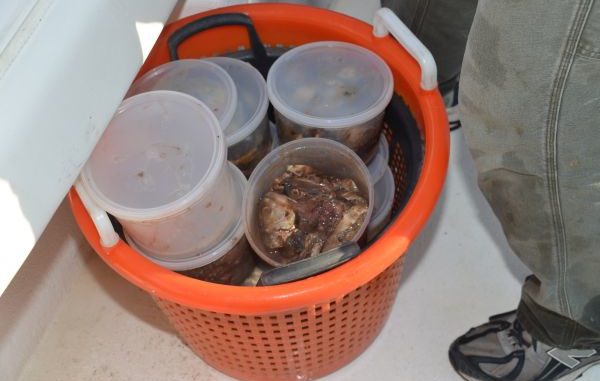
Chum, and plenty of it, is a critical part of catching fall tuna ghosting under shrimp boats. Chum can be almost anything fishy, and it doesn’t have to be fresh.
The Fouquiers start stocking up on chum a couple of months before the tuna-shrimp trawler season. They buy pogies, cut them in pieces and freeze them in containers. Blake Fouquier also has a friend who owns a shrimp boat, a huge plus. He saves some of the by-catch from his shrimping operation, which Blake freezes as well.
Interestingly, the men generate some of their best chum from their fishing trips. They save the stomachs and stomach contents of the tuna they catch.
“Hey, if it was good enough to eat once, it’s good enough to eat again,” quipped Fouquier.
To be safe, the men don’t leave the dock with less than 100 pounds of chum.
“Sometimes we don’t use it all, we may only need 15 or 20 pounds of it,” Fouquier said. “Sometimes 100 pounds isn’t enough.”
Any leftover chum is saved and re-frozen.
Bait is a different matter than chum. When it comes to putting a hook in something, nothing beats live bait. The Fouquiers most often use live pinfish and mullet that they catch the night before the trip with a cast net near the marina’s fish cleaning station. They try to have 35 to 50 live baits for a trip, which pretty well maxes out their live bait well.
When the tuna are not being finicky, the Fouquiers will sometimes use whole pogies from their frozen stash as bait. Chunked bonita (little tunny) caught while they are fishing is always used. The bloody meat works well as chum and bait.
